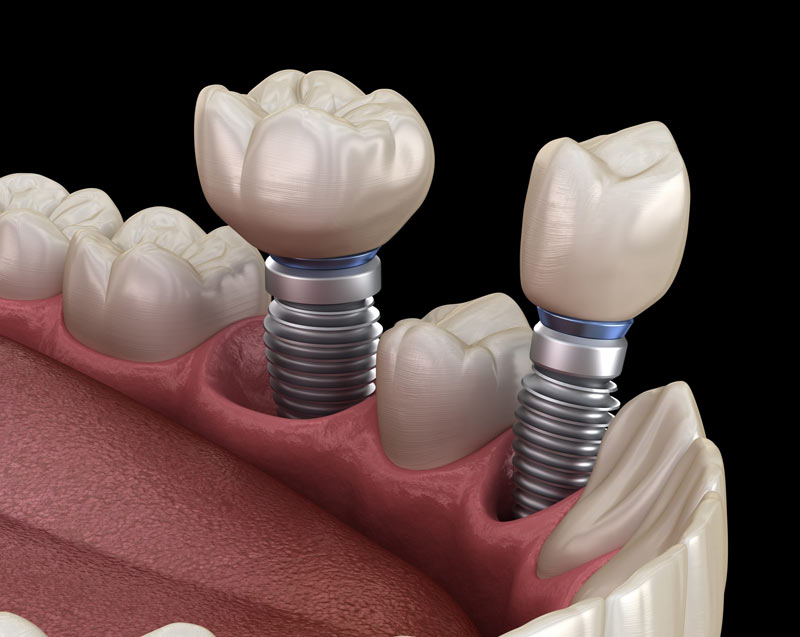
Dental implants have revolutionized the field of restorative dentistry, offering a reliable and long-lasting solution for replacing missing teeth. One crucial factor that significantly influences the success of dental implant treatment is the presence of adequate bone around the implant at the time of placement. In this blog post, we will explore the importance of having sufficient bone around implants and how it contributes to the overall success of the implant procedure.
The Foundation of Implant Stability:
Bone serves as the foundation for dental implants, providing stability and support for the artificial tooth roots. During the implant placement procedure, the implant is surgically inserted into the jawbone, where it integrates with the surrounding bone tissue through a process called osseointegration. Optimal osseointegration relies on a sufficient volume and quality of bone, ensuring a stable and long-lasting implant restoration.
Enhanced Aesthetics and Functionality:
Adequate bone volume plays a vital role in achieving optimal aesthetics and functionality of dental implants. When implants are placed in an area with ample bone, it allows for proper positioning, alignment, and emergence profile of the implant crown or prosthesis. This helps create a natural-looking smile and ensures a harmonious integration with the surrounding teeth, enhancing both the appearance and functionality of the restoration.
Preservation of Facial Structure:
The presence of bone around dental implants also contributes to the preservation of facial structure. When teeth are lost, the underlying bone begins to resorb due to lack of stimulation. Without the necessary bone support, the facial structure may undergo changes over time, resulting in a sunken or aged appearance. Dental implants help stimulate the bone, preventing further bone loss and maintaining the natural contours of the face.
Prevention of Implant Complications:
Insufficient bone volume can lead to various implant-related complications. Without enough bone support, the implant may lack stability, increasing the risk of implant failure, implant mobility, or even bone loss around the implant site. Additionally, inadequate bone may compromise the positioning of the implant, leading to compromised aesthetics and difficulties in placing a properly fitting prosthesis.
Bone Augmentation Options:
In cases where the patient lacks sufficient bone volume, bone augmentation procedures can be performed to enhance the quantity and quality of the bone. Techniques such as bone grafting, ridge augmentation, and sinus lifting can help build up the bone around the implant site, creating a solid foundation for successful implant placement.
Having adequate bone around dental implants is a critical factor in achieving long-term success and optimal outcomes in implant dentistry. The presence of sufficient bone volume ensures implant stability, improves aesthetics and functionality, preserves facial structure, and minimizes the risk of implant complications. When evaluating a patient for dental implant treatment, comprehensive assessments of the bone volume should be conducted to determine the appropriate treatment plan, including bone augmentation procedures if necessary. By prioritizing the quality and quantity of bone, dental professionals can optimize implant success rates and provide patients with functional, natural-looking, and durable tooth replacements.
Talk to US About an Appointment